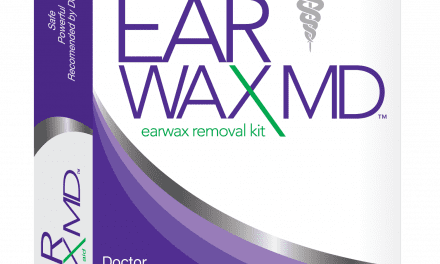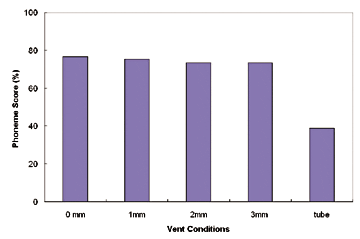Wireless hearing instruments and their connectivity benefits present new and excellent options for people with hearing impairment. However, due to the unique demographics involved in hearing care, the complexity of these systems is a paramount issue that must be addressed in the initial design plans.
Today, technology is an integral part of everyday life, and consumers have come to expect user-friendly product interfaces to help them overcome increasing technological complexity. For hearing aid users who rely on their hearing aids to lessen the daily impact of their hearing loss, it is essential that technological advances comprise a positive contribution, rather than an obstacle, in their lives.
However, MarkeTrak surveys1 have revealed that a relatively large proportion of hearing aid users (12% to 17%) are so dissatisfied with their hearing aids that the hearing aids end up in the drawer. A number of negative factors have been found to contribute to the users’ dissatisfaction with their hearing aids, involving benefit, performance in background noise, comfort, sound quality, and ability to manipulate the hearing aids.2,3
While the improvement of certain parameters—such as performance in noise and sound quality—has been given relatively large amounts of attention by the hearing aid industry, user-friendliness has not been the object of much study. This is unfortunate, as several studies have indicated that managing even the most basic functions can pose problems for a relatively large number of users.
For example, a study by Parving and Philip4 showed that 40% of the participants were unable to perform the task of changing the volume of their hearing aids. A study by Humes5 revealed lower satisfaction rates, lower perceived benefit, and lower use in users who found it difficult to manage their hearing aids.
There is little doubt that instruction (counseling) will have a positive impact on the users’ ability to manage their devices. However, MarkeTrak data6 have revealed that instruction of the users on how to manage and care for their devices must typically take place within a very short time frame. According to user reports, hearing care professionals spend an average of 45 minutes instructing their clients on how to manage and care for their instruments, including explaining the various features and describing what they realistically can expect from the instruments. This means that a relatively large amount of information has to be conveyed and absorbed within a short time span.

Table 1
From this perspective, products that are intuitive and easy to use will clearly benefit both clinicians and users. Clinicians will find it easier to familiarize themselves with new products and instruct their clients; the clients will find it easier to use the devices, which may lead to increased usage and acceptance, and ultimately to greater benefit from the hearing aids.
However, in order to develop user-friendly products, it is important to understand what constitutes user-friendliness in connection with devices intended for hearing aid users.
Dispenser Focus Study: Practical Limits of User-friendly Alds
In 2010, Widex introduced the proprietary wireless technology WidexLink, which enables wireless exchange of both data and audio signals. A prime reason for the introduction of digital wireless transmission was the potential for data exchange and audio streaming in a hearing aid system that allows audio transmission between the hearing aids (eg, the transmission of an audio signal to the opposite hearing aid) and the continuous exchange of synchronization data between the hearing aids (InterEar communication).

Figure 1. The key principles in the Widex Ease user interface design concept are: 1) User understanding; 2) Recognition; 3) Automated behavior; 4) Intentional action + Predictable reaction; and 5) Sensory response.
The wireless widexlink platform also opened up the possibility of creating new wireless assistive listening devices (ALDs) that would address several of the main difficulties experienced by hearing aid users in their daily lives, including watching TV and talking on a cell phone. A central goal in the design of the devices was that they be intuitive and easy to use.
In order to achieve this goal, it was important to establish what constitutes user-friendliness in a device intended for hearing aid users. One way to understand this is to obtain first-hand experience from people who work with such devices on a daily basis. Eight focus group sessions were conducted (two in Germany and six in the United States), each involving five to seven hearing care professionals. Two of the focus groups consisted of dispensing professionals from a dispensing chain, while the other groups consisted of dispensing professionals from independent clinics. The mediators asked the dispensers a number of questions about their experiences with existing ALDs and about their wishes for future products.
The dispensers were asked to prioritize a number of user control options that differed in terms of simplicity and connectivity to external devices such as a tv set, a cell phone, or an MP3 player. The most basic option consisted of a set of wireless hearing aids with no remote-control option available. The second basic option included a simple remote control. The third option offered an advanced remote control. The fourth option included a combined audio streaming device and advanced remote control. The fifth option involved a transmission device for TV sound, and a combined audio streaming device and advanced remote control. The sixth and most comprehensive option included a simple remote control, a combined audio streaming device and advanced remote control, and a transmission device for TV sound. The priority given by the dispensing professionals to each accessory option is shown in Table 1.

Figure 2. The RC-DEX has been designed to allow the user to adjust volume and change between programs easily and discreetly.

Figure 3. The TV-DEX consists of the TV-Base, which is a combined long-range transmitter and charger for the TV-Controller, which is a combined TV remote control and intermediate transmitter for the hearing aids. The TV-DEX controller has been designed to look and function like a TV remote control.

Figure 4. The M-DEX resembles a cell phone in appearance, functionality, and size.
The dispensers gave first priority to the option that offered a tv audio transmitter and a combined streamer and advanced remote control—the main reason being that a tv audio transmitter would appeal widely to their clients. they were less positive about the combined streamer and remote-control option that accompanied the tv audio transmitter, as it was thought to be too challenging for the majority of clients. The simple remote-control option, on the other hand, was high on the list, as it would fulfill the most important day-to-day needs without requiring much effort on the part of the clients. Low priority was given to the advanced remote control, and to the combined audio streamer and advanced remote-control options.
Most dispensing professionals would like to be able to offer advanced solutions that include connectivity to cell phones and personal audio devices (eg, MP3 player). However, there was a general consensus that such solutions appeal mainly to a small group of technology enthusiasts.
One central conclusion was that, while advanced all-purpose devices (universal remote controls) that function as remote controls for both the hearing aids and external devices like a TV set or a cell phone may have high technological prestige, they are too complex for the majority of users to operate. Instead, there was a general feeling that hearing-impaired clients fare much better in their daily lives with transparent, purpose-specific devices for different situations. This conclusion became the backbone in the design of a new range of wireless ALDs called DEX.
Improved Utility Through the Principles of Cognitive Ergonomics
A new user interface design concept with the emphasis on usability was developed in connection with the dex assistive listening devices. the new design concept, dubbed Widex Ease, incorporates the principles of Cognitive Ergonomics. Cognitive Ergonomics, also known as Cognitive Engineering, is a scientific discipline concerned with the match between human cognitive abilities and the design and operation of products with which the consumer will have everyday interaction.7-9
A basic assumption is that, if the product design reflects and supports human cognitive characteristics, then people will find the products intuitive to use, be more inclined to embrace them, and make fewer mistakes7 when using them. The central principles in Cognitive Ergonomics that were applied in the DEX design are: User understanding, Recognition, Automated behavior, Intentional action + Predictable reaction, and Sensory response.
User understanding. When users embrace a new product, it is often with the assumption of knowing how it will work. This assumption, or user understanding, is based on a mixture of prior experience, the appearance and design of the device, and knowledge about the technology. Designing the devices to look and function in the way most people would expect them to is an important aim if user-friendliness is to be achieved.
Recognition. Recognition is important in making the user feel that the product is easy and intuitive to use. Ease of use can be achieved by giving buttons and displays a design and location that the user recognizes from their use of other technologies.
Automated behavior. Automated behavior is characterized by being highly practiced and skilled. it can be carried out without conscious attention. conscious behavior, on the other hand, occurs when the user has to pay attention to the task. It is a cognitive process that requires time, effort, and often some training. It is therefore in the user’s interest that, whenever possible, the interaction supports automated behavior, as it is quicker and requires fewer mental resources.
Intentional action + predictable reaction. The user’s actions are intentional and have a purpose. a product must react in a manner that is predictable, as well as understandable, in order for the interaction to be smooth and trouble-free. For example, when the user presses the Volume Up button once, a corresponding reaction in which the volume is increased by a single increment must occur—the predictable reaction to a single press of the button.
Sensory response. When users interact with a product, sensory response in the form of touch (tactile response) or vision (visual response) can contribute toward a feeling of reassurance and control.
Applied User-friendliness
Applying the principles of Cognitive Ergonomics is especially important in the design of advanced and complex devices. while failing to be able to use a complicated ALD may not be life-threatening, it can cause considerable frustration on the part of the hearing aid user and may ultimately result in the product being left unused in a drawer—or a premium feature for enhanced customer satisfaction rendered moot.
The widex ease design concept has been implemented in a new series of wireless assistive listening devices called DEX, which are available with the CLEAR and SUPER hearing aid families. Embedding the principles of Cognitive Ergonomics, these devices have been designed to be situation-specific rather than all-purpose devices, with the aim of ensuring straightforward and easy operation. The key principles are summarized in Figure 1.
An important goal is to ensure that the new ALDs react in a manner that is predictable and understandable to most hearing aid users. Accordingly, when the products have a similar functionality to known technology (eg, cell phone or remote control), the DEX products resemble these in appearance as well as functionality to allow users to draw on their previous experience.
Furthermore, users are whenever possible provided with a sensory response to their actions. Tactile (touch) response is provided through the shape and size of the buttons, and through vibrations and clicks that can be felt. Visual response is provided through LEDs, and through a combination of symbols and text on the color display of the M-DEX. A more detailed discussion of how the guiding principles of user-friendly design have been incorporated into the design of each DEX device is provided below.
Basic Hearing Aid RC Functions

Figure 5. Visual feedback is provided by means of conventional symbols and written messages (in this example, the conventional telecoil symbol).
The RC-DEX is a simple remote-control device that has been designed to make the use of basic everyday wireless remote control functions as uncomplicated as possible (figure 2). Small enough to fit on a key ring, the RC-DEX provides the two basic remote control functions of volume adjustment and program change by means of three buttons. To make sure that handling requires as little conscious effort as possible (ie, Automated behavior), the button surfaces are elevated or lowered relative to each other to make them easy to find and easy to recognize by touch. To reassure the user that the device is reacting in response to the user’s actions, a LED indicator lights up when the remote control is activated, and a verbal message (SmartSpeak) or tone cue confirms the user’s choices in the hearing aids (principles of Intentional action + Predictable reaction, and Sensory response).
Purpose-Built for TV Viewing
Transparency and recognition also have been the guiding principles in the design of the tv-dex, a remote-control device dedicated to the use of a TV or other audio systems, such as a hi-fi. The TV-DEX consists of the TV-Base and the TV-Controller (Figure 3). The TV-Base is a wireless transmitter for TV sound, as well as a charger for the TV-Controller. The TV-Controller is a combined TV remote control and intermediate transmitter for the hearing aids.
Resembling a TV remote control in appearance and function, the TV-Controller features three buttons: On/Off, Volume, and Room Off. The On/Off key is similar to the On/Off button of a regular television remote control in terms of its location and appearance. The button surfaces are elevated or lowered, relative to the surface of the controller, to make them easy to find and recognizable by touch (principles of User understanding, Recognition, and Sensory response).
The Room Off button can be used to turn off the hearing aid microphones while the TV sound is transmitted directly to the hearing aids to prevent environmental sounds from interfering with the program.
To ensure that the operation of the device requires as little conscious effort as possible, the surface of the TV-Controller is divided into two sections, each marked by a different color (silver and black). In addition, the location of the buttons means that, when the TV-Controller is being used, the buttons facing the TV (On/Off and Volume) are the ones that control the TV, while the button facing the user (Room Off) is the one that controls the hearing aids (principles of Recognition and Automated behavior).
Straightforward Use of Cell Phones
Designed to resemble and function like a cell phone (figure 4), the M-DEX offers the same basic features as a cell phone, such as Accept/Reject calls, Volume, Call Back function, and Caller ID (principle of User understanding). The green and red colors of the Accept and Reject buttons follow the convention of color usage in cell phones, and the location of the buttons is the same as that of cell phones. The M-DEX also gives a vibrating alert to signal an incoming call, as in a cell phone (principles of Recognition, Automated behavior, and Sensory response).

Figure 6. Subjective assessment of the user-friendliness of the RC-DEX and the M-DEX by a total of 23 hearing aid users with mild to severe hearing loss.
The M-DEX also provides advanced remote-control options for the user’s hearing aids, and connectivity between hearing aids and personal audio devices, such as an MP3 player or an iPod. Great efforts have been made to ensure that the M-DEX user interface is structured in a consistent and predictable manner so that the user can navigate the features and menus without getting lost. A confirmation rule ensures that the user can feel safe when toggling between menus or submenu options. No changes or activation of features will occur until the user consciously chooses to activate them by pressing the menu key (principle of Intentional action + Predictable reaction). Symbols and written messages follow common user interface conventions, which make them easy to grasp (principle of Recognition). An example is given in Figure 5.
User Satisfaction with the Devices
To test the user-friendliness of the dex devices in real life, a study of 23 hearing aid users (mean age of 60.2 years) with mild-to-severe hearing loss was carried out. Participants were fitted with Widex Clear440-Passion or Fusion hearing aids, matched with either an RC-DEX or an M-DEX. Half of the group tried the RC-DEX at home for an average of 2 weeks, while the other half tried the M-DEX. Participants were asked to rate the general user-friendliness of the DEX devices on a scale consisting of the categories “Very easy to use,” “Somewhat easy to use,” “Not very easy to use,” “Not at all easy to use,” or “Don’t know” for everyday functions. In addition, the participants who used the M-DEX were asked a series of questions pertaining to its ease of use during phone calls.
When rating the general user-friendliness of the dex devices, the overwhelming majority of the responses (more than 80%) were in the “Very easy to use” or “Somewhat easy to use” categories in every instance (Figure 6). These results suggest that the Widex Ease design concept has succeeded in generating a high degree of overall user-friendliness.

Figure 7. Subjective assessment of the user-friendliness of the M-DEX when used with a cell phone.
The user-friendliness of the m-dex while making cell phone calls was evaluated by asking the participants to rate the ease-of-use of the m-dex when answering a cell phone call, making a cell phone call to a familiar number, rejecting an incoming call, adjusting the volume on the cell phone during a conversation, and the ability to suppress unwanted noise from people or objects in their immediate surroundings during a cell phone call (Room Off function). The results are displayed in Figure 7. Again, the vast majority (more than 80%) of the responses fell into the “Easy” or “Very easy” categories in every instance. This indicates that the Widex Ease user interface design concept also resulted in a high degree of user-friendliness when more of the advanced functionality offered by the new range of devices was used.
Conclusion
For hearing aid users who rely on their hearing aids to reduce the impact of their hearing loss, it is crucial that new advanced ALDs do not end up being an additional complication in their lives. Widex has therefore developed a new user interface design concept, Widex Ease, based on the principles of Cognitive Ergonomics, to meet those needs.
The aim of the widex ease user interface design concept is to make products as straightforward and intuitive as possible to use for the benefit of both clinicians and end users. increased user-friendliness makes it easier for clinicians to familiarize themselves with new products and instruct their users. Likewise, increased user-friendlieness may lead to users finding it easier to embrace the DEX devices, which may subsequently lead to increased usage and acceptance, and ultimately to greater benefit from the hearing aids.
THE Widex Ease concept has been implemented in a new range of alds, and trials have demonstrated that users do indeed find the DEX devices easy to use, both for basic remote control functions and in connection with more sophisticated uses, such as cell phone calls.
References
- Kochkin S. MarkeTrak VIII: Consumer satisfaction with hearing aids is slowly increasing. Hear Jour. 2010;63(1):19-32.
- Kochkin S. MarkeTrak V: “Why my hearing aids are in the drawer”: the consumers’ perspective. Hear Jour. 2000;53(2):34-41.
- Humes L. Hearing-aid outcome measures in older adults. Proceedings of the International Conference, A Sound Foundation Through Early Amplification; 2006; Chicago.
- Parving A, Philip B. Use and benefit of hearing aids in the tenth decade—and beyond. Audiology. 1991;30(2):61-69.
- Humes L. Hearing-aid outcome measures in older adults. Proceedings of the International Conference, A Sound Foundation Through Early Amplification; 2006; Chicago.
- Kochkin S. MarkeTrak VI I : Customer satisfaction with hearing instruments in the digital age. Hear Jour. 2005;58(9):30-43.
- Cañas JJ. Cognitive ergonomics in interface development evaluation. Journal of Universal Computer Science. 2008;14(16):2630-2649.
- Norman DA. The Design of Everyday Things. New York: Basic Books; 2002.
- Vicente KJ. Cognitive Work Analysis: Toward Safe, Productive, and Healthy Computer-Based Work. Mahwah, NJ: Lawrence Erlbaum Associates; 1999.
Citation for this article:
Andersen HP, Holm H, Rose S,. Cognitive Ergonomics: Making It Simple Hearing Review. 2012;19(02):40-47.








